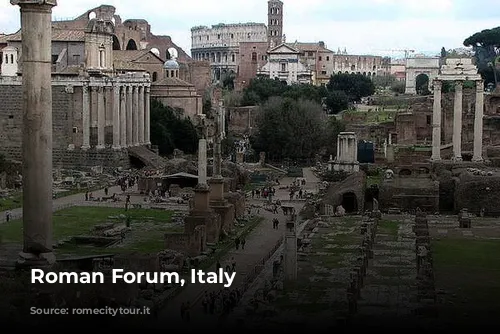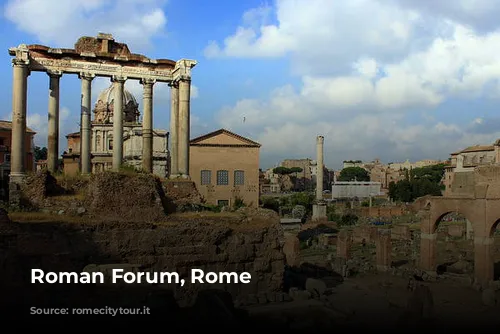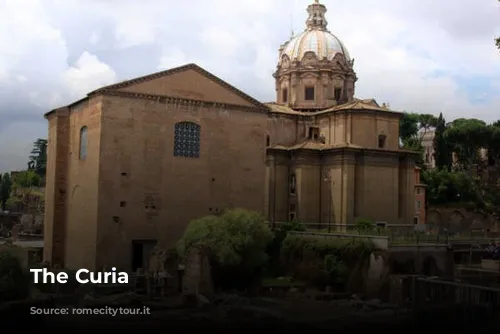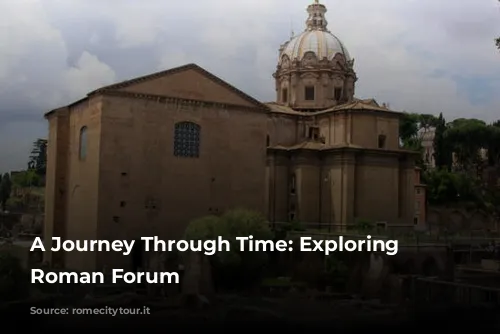Imagine a place where history whispers through crumbling pillars and forgotten pathways. This is the Roman Forum, a captivating window into the heart of ancient Rome. This bustling metropolis, once a vibrant hub of politics, religion, and commerce, now stands as a testament to a bygone era. Let’s embark on a journey through time, discovering the secrets and wonders of this iconic site.

The Heart of Ancient Rome
The Forum Romanum, simply known as “The Forum,” was the central meeting point for the people of Rome. Its roots stretch back to the 7th century BC, a time when the city was just beginning to emerge as a powerful force. From its humble beginnings as a simple marketplace, the Forum evolved into the beating heart of the Roman Empire. This was where emperors addressed their people, where trials were held, and where the fate of the empire was often decided. It was the stage for elections, public speeches, gladiatorial contests, and countless other events that shaped Roman history.
The Forum’s significance is undeniable. It has been declared the most celebrated meeting place in history. Even today, as we stand amidst the remnants of its grandeur, we can’t help but be awestruck by the might of the ancient Romans and their remarkable architectural prowess.

A Journey Through Time
Step into the Forum and you’ll be faced with a tapestry of history, with each structure whispering a unique tale of the past. Let’s delve into the heart of this ancient city, exploring its most noteworthy buildings.
To your left, the Tempio di Antonio e Faustina stands as a reminder of Roman devotion. This temple, erected in 141 AD, was later transformed into a church, known as Chiesa di San Lorenzo in Miranda. Moving right, you’ll encounter the majestic Basilica Fulvia Aemilia, a colossal public hall stretching over 100 meters. This structure, built in 179 BC, witnessed countless gatherings and deliberations that shaped Roman society. And if you choose to head straight, you’ll find yourself on the Via Sacra, the Forum’s main walkway. This ancient thoroughfare leads you to a multitude of attractions, each offering a glimpse into the vibrant past of this once-mighty city.

Echoes of the Gods
Among the Forum’s many structures, the Temple of Saturn stands out as a symbol of wealth and freedom. This iconic building, with its eight majestic pillars, was constructed in 498 BC and later rebuilt in 42 BC. Saturn, the god of wealth, was honored here, and the temple served as the Roman treasury. During the Saturnalia festival, celebrated every December, Romans would give gifts, and slaves would enjoy temporary freedoms. In this festive spirit, Saturn’s feet were symbolically freed from their ties, reminding everyone of the value of liberty.

Arches of Triumph
The Arch of Septimus Severus, a magnificent white marble arch, marks the northwest end of the Forum. Built in 203 AD to celebrate the defeat of the Parthians, this grand monument was dedicated to Emperor Septimus Severus and his sons. However, the arch bears a tragic tale. After Septimus Severus’ death, his sons became joint emperors, but one, Geta, met an untimely demise at the hands of his brother. In the aftermath, all images and mentions of Geta were ruthlessly erased from public monuments, leaving the Arch of Septimus Severus with a poignant reminder of a fractured empire.

The Seat of Power
The Curia, where the Roman Senate convened, was a vital hub of political power. Construction began under Julius Caesar, but it was completed after his assassination, under the rule of Augustus Caesar. This impressive building, once adorned with marble, has been stripped of its splendor over time, leaving only a simple brick structure. Today, the Curia stands as a reminder of the impermanence of power and the passage of time.
A Legacy of Triumph
The Arch of Titus, a testament to Roman military might, is said to have inspired the Arc de Triomphe in Paris. Built in 81 AD by Emperor Domitian to celebrate the victories of his brother, Titus, it stands as a symbol of Roman ambition. One of Titus’ most notable victories was the siege of Jerusalem in 70 AD. However, this victory also carried a dark legacy, as many Roman Jews refused to walk beneath the arch, seeing it as a reminder of their city’s downfall.
A Place of Remembrance
The Temple of Caesar, built in 29 BC, holds a unique significance. This site marks the spot where the assassinated body of Julius Caesar was cremated. After his death, supporters erected an altar at the site of his cremation, only to have it destroyed by those who had wished for his demise. Later, the Senate deified Caesar, and Emperor Augustus ordered the construction of a temple in its place. Today, while the site of Caesar’s cremation appears to be a simple pile of rocks, it holds immense cultural significance, attracting visitors who pay their respects with flowers.
A City Reborn
Like many ancient cities, the Forum fell into disrepair, its structures crumbling with the passage of time. The land was no longer of political or social value and was converted into a cow pasture, known as Campo Vaccino. Much of its marble and stone was stripped away. However, in the 18th century, excavations began, revealing the hidden treasures of the Forum. These excavations continue today, bringing to light the secrets and grandeur of this ancient city.
The Roman Forum stands as a testament to the enduring power of history. Even as it lies in ruins, it reminds us of the greatness of the Roman Empire and the enduring fascination of the past. This remarkable site is a must-visit for anyone wanting to experience the heart of ancient Rome and immerse themselves in a world of emperors, gods, and forgotten stories.
